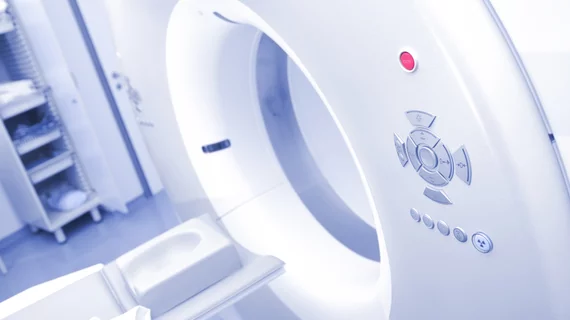Checklist helps providers know when patients need general anesthesia before MRI scans
Researchers have developed a new checklist to determine if general anesthesia (GA) is needed when children and young adults undergo MRI scans, sharing their findings in Clinical Radiology.
“Use of sedation and GA is expensive and are not without risks and adverse effects,” wrote M.Y. Sum of KK Women’s and Children’s Hospital in Singapore, and colleagues. “Although it has been suggested that the use of GA and sedation is generally safe and risks can be minimized with the use of standardized protocols, along with the presence of trained personnel and appropriate equipment, various studies have reported on risks associated with their use. Some have reported long-term effects on patients, whereas others report distress to the patients, their family members, and medical staff.”
The checklist included five questions that focused on four key areas of the patient’s behavior: restlessness, attention span, distractibility and how well they comply with instructions. Some examples of questions included as part of the checklist included, “is the child able to sit on the chair for 10 minutes (without being restless)?” And “is the child able to obey commands and instructions during the interview?” After observing the child so that they can answer the question, the assessor can complete the checklist in less than two minutes.
The research team used its checklist to assess more than 700 patients between the ages of 3 and 20 who were scheduled for an MRI exam from September 2016 to June 2017. Patients were not included if unable to communicate. Medical students and research assistant carried out the assessments independently of one another.
Overall, the mean age of the patients was 11.7 years old. In a subset of 124 children under the age of 8, the mean age was 5.5 years old. In both the overall group and that subset of younger patients, children that fell into the “no GA” group were significantly older than children selected for the “GA” group. No gender differences were observed.
The checklist was successful in selecting children who needed GA before their imaging procedure. It had an area under the ROC curve of 0.97 for both the overall group and the subset of smaller children.
In addition, the authors noted, the intraclass correlation coefficient—a statistic used to describe how much units in a group resemble one another—was 0.78.
“The child assessment checklist administered by non-clinical staff is useful in assessing GA requirement in children, correlating well with GA requirement in children undergoing MRI, and showing good inter-rater reliability,” the authors wrote. “The item assessing the child's ability to obey instructions was found to have the greatest association with not requiring GA during MRI.”
The team did note that its research did not assess how the body region being imaged impacted the GA requirement, if at all.

